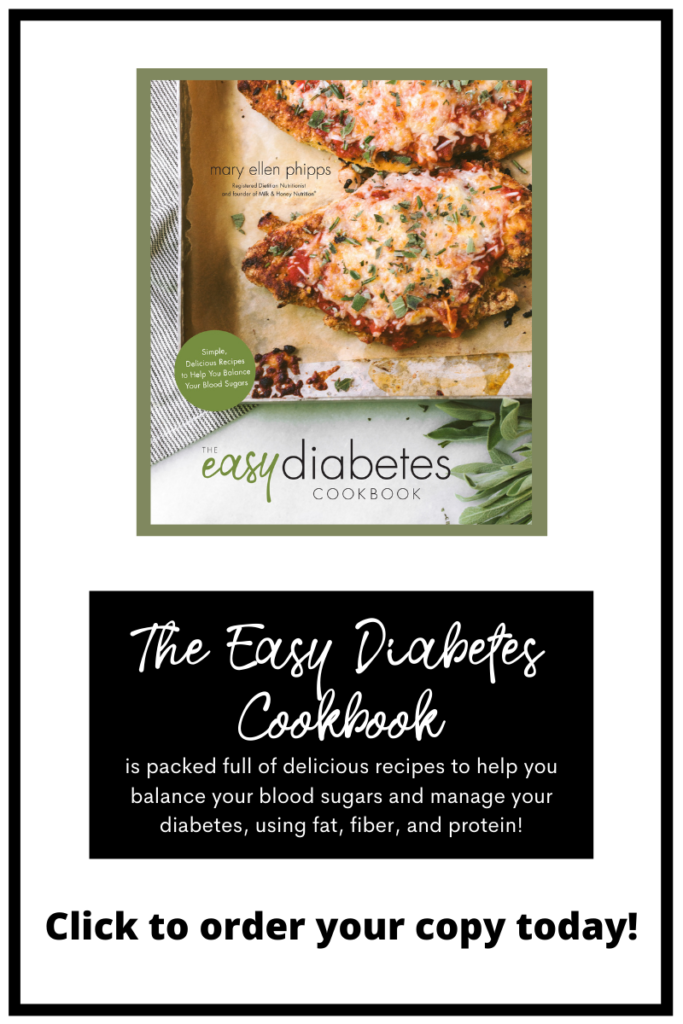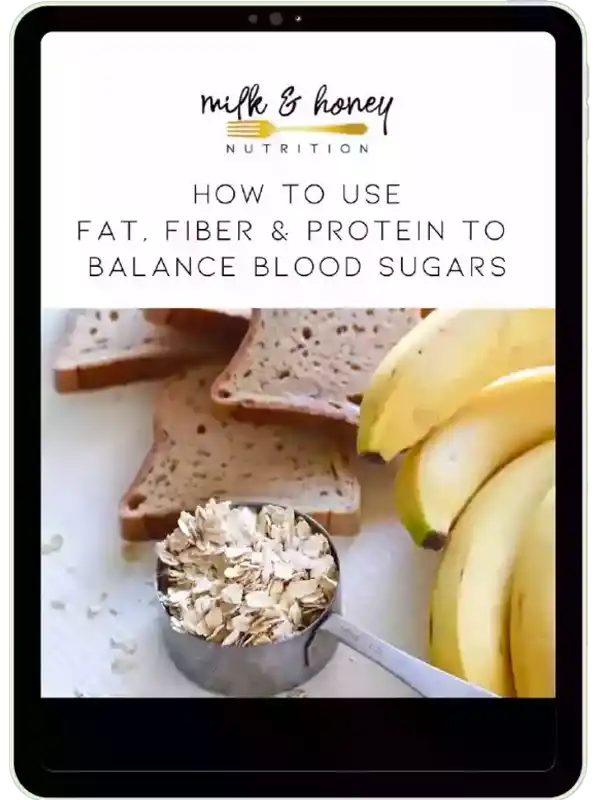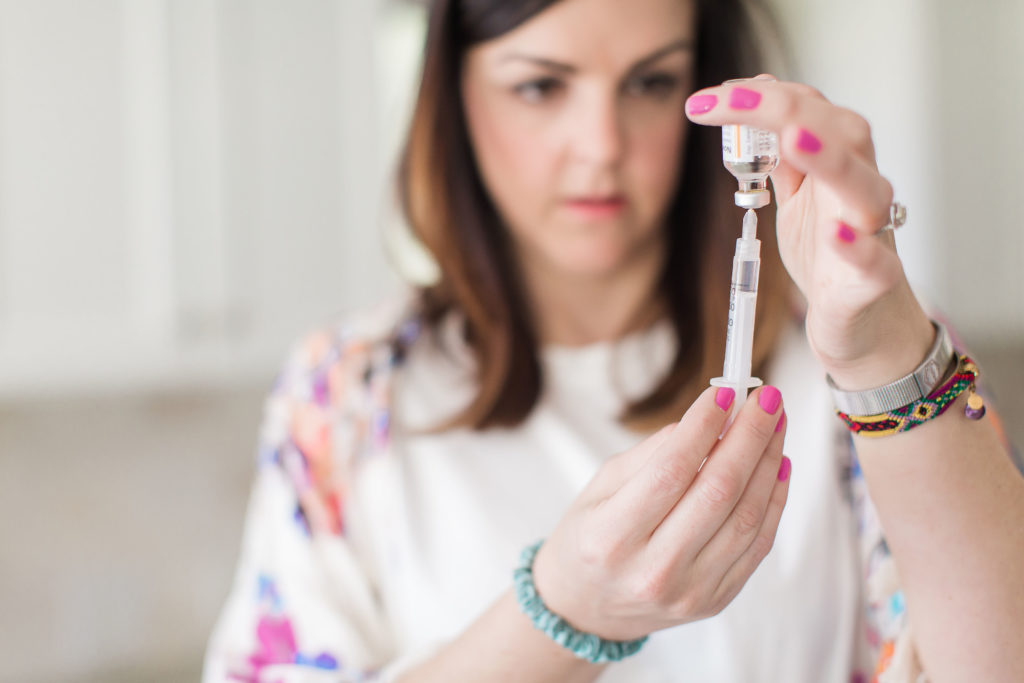
There are many different types of insulin used for diabetes management. Here are the main types and some key facts you should know about insulin.
When managing diabetes, many people need to use insulin to regulate blood sugar levels. To do this efficiently, health care providers and patients utilize a variety of types of insulin based on the patient’s needs.
***This article is not intended to provide medical advice, diagnosis, opinion, treatment or services. This article and the links contained in it provide general information for educational purposes only. The information provided in this article is not a substitute for medical care, and should not be used in place of the advice of your physician or registered dietitian.
What is insulin?
Insulin is a hormone produced by the pancreas to lower blood glucose levels.
Your healthcare provider will determine which of the types of insulin is right for you. Diabetes does not have a one-size-fits-all treatment plan. We all have unique needs.
The types of insulin we will talk about are rapid-acting insulin, regular or short-acting insulin, intermediate-acting insulin, long-acting insulin, ultra long-acting insulin, and premixed insulin.
Before we discuss these types of insulin though, we need to review two dangerous side effects of taking too much or not enough insulin.
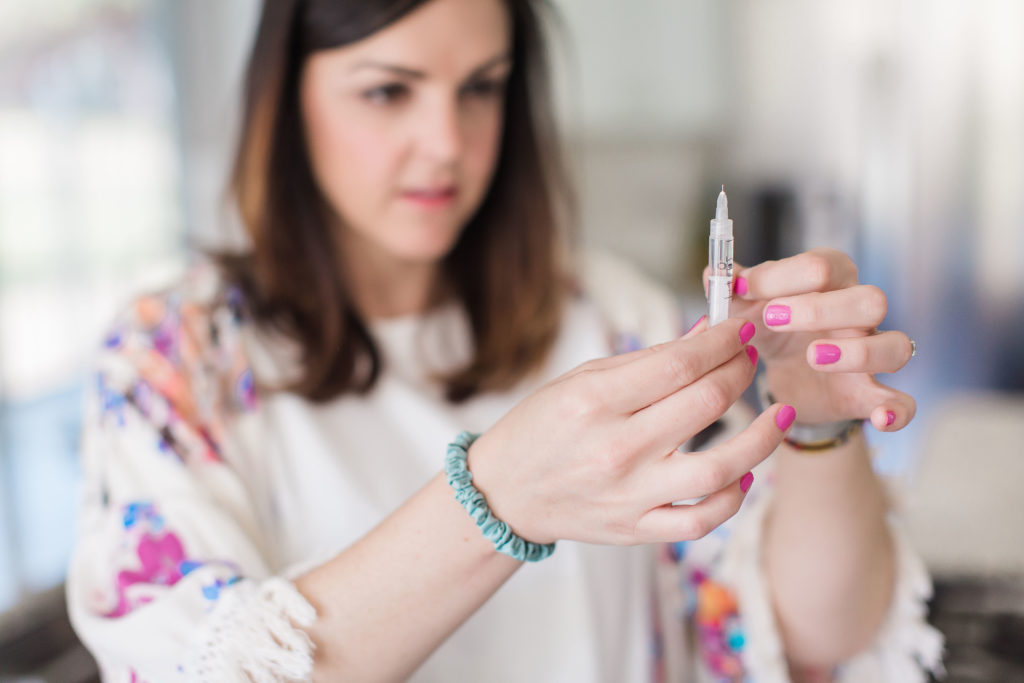
What is hypoglycemia?
If glucose levels are too low, the ability to think clearly and react to the world around you is altered almost immediately. This is called hypoglycemia and can be life threatening.
What are the symptoms of hypoglycemia?
Many things can cause hypoglycemia, but one common cause is too much insulin being injected/administered in relation to how much carbohydrate is being consumed or activity levels. Common symptoms include: confusion, tiredness, extreme fatigue, numbness in your extremities, nauseousness, and more.
How to treat hypoglycemia
When your blood sugar is low, you need to get it up as quickly as possible. To do this, you need to do the exact opposite of everything I normally say. You actually want to avoid fat, fiber, and protein and choose high glycemic carbohydrates. This means you want to choose carbohydrates that will raise your blood sugar very quickly.
Normally, this is not what you want to do… But having a low blood sugar can be a life-threatening situation if you don’t get it back up to normal quick enough.
Examples of fast-acting carbs include: fruit juice, applesauce, fruit snacks, glucose tabs, glucose gel, and others.
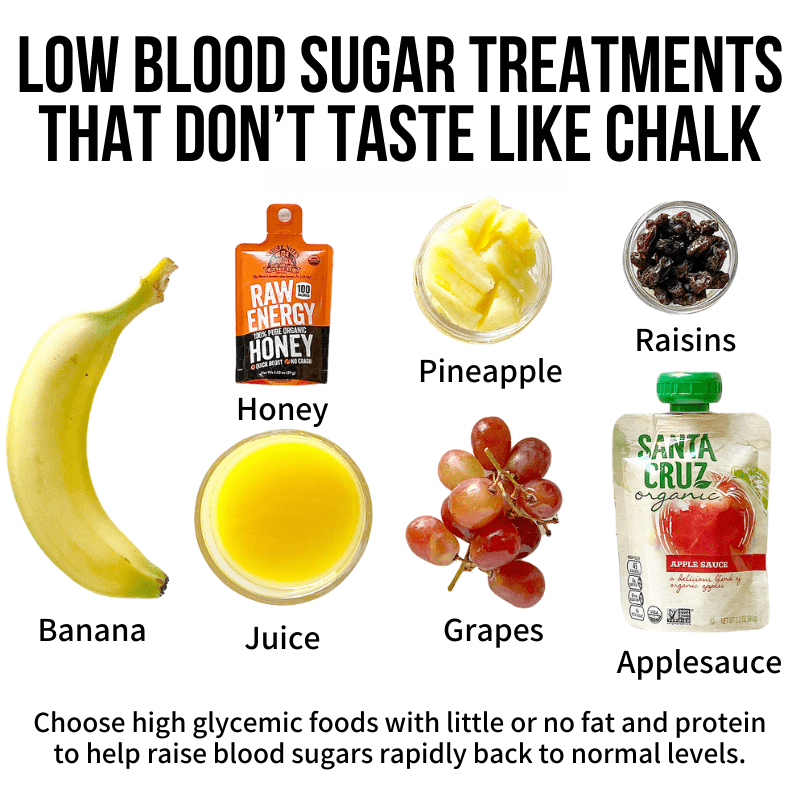
How much carbohydrate to treat your low blood sugar with is dependent on many different factors:
- What you were doing before the low blood sugar
- What you’re going to do after the low blood sugar
- The last time you injected/bolused insulin
- The last time you ate
- How carb sensitive you are
Make sure to talk to your doctor and have a realistic, and doable treatment plan in place.
What is ketoacidosis?
Regardless of the types of insulin you are on, a side effect of not having enough insulin in your blood stream is called diabetic ketoacidosis (DKA). DKA is an acute side effect of high glucose levels that can lead to life-threatening consequences.
When your body’s cells are not able to use the glucose in your bloodstream because of the lack of insulin, the liver tries to produce more glucose for the body. This causes a build-up of ketones in the bloodstream. A buildup of ketones causes the blood to be more acidic leading to DKA.
Symptoms of DKA include thirst, frequent urination with high ketone levels, and high blood glucose. If you have any of these symptoms, seek medical attention immediately.

Common types of insulin used for diabetes management
Now that we have discussed some of the potential side effects to be aware of when using insulin to manage your diabetes, we will discuss the different types of insulin available. These types of insulin can be differentiated by 4 different factors:
- Intended use: when that type of insulin is used or injected
- Onset: length of time before insulin reaches the bloodstream and begins to work
- Peaktime: The time insulin is lowering glucose at its max ability
- Duration: How long the insulin is lowering glucose levels
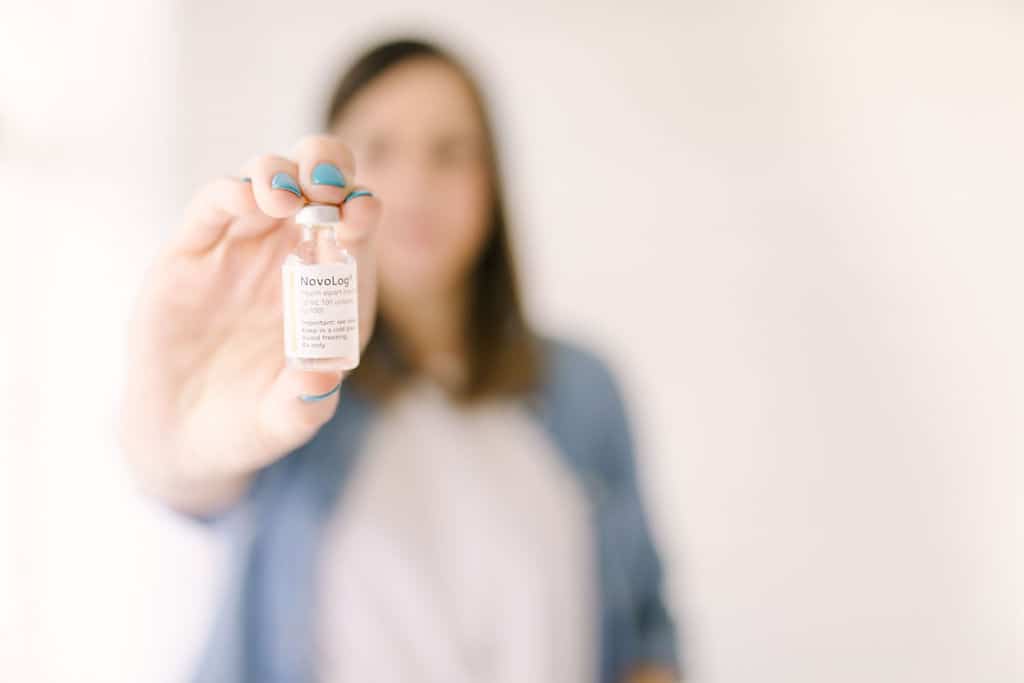
Rapid-Acting Insulin
Rapid-acting insulin is an insulin that is suitable for many types of diabetes. This insulin can be injected using a needle, pump, or pen. The insulin is injected or pumped into fatty tissue in order for it to reach the bloodstream.
- Intended use: 15 minutes before a meal/food, to correct hyperglycemia, and/or as a basal drip from an insulin pup
- Onset: 15 minutes
- Peak time: 1 to 2 hours after injection
- Duration: 4-6 hours after the initial injection
Regular or Short-Acting Insulin
Regular or short-acting insulin and rapid-acting insulin are quite similar. This type of insulin can be taken by needle/syringe and vial, by a pen, and via a pump.
- Intended use: taken 30 minutes before a meal
- Onset: 30-60 minutes
- Peak time: 2-4 hours after injection
- Duration: 5-8 hours
Intermediate-Acting Insulin
Intermediate-acting insulin is quite different from rapid and regular insulin but similar to long-acting insulin (see below). This insulin is typically used along with rapid and regular insulin. Some typical brands marketed for long-acting insulin are Humulin N and Novolin N. These brands are available as a pen or vial. The injection is only given under the skin using a needle or a pen and is not suitable for a pump.
- Intended use: 2x daily
- Onset: 1-3 hours
- Peak time: 4-10 hours
- Duration: 10-16 hours
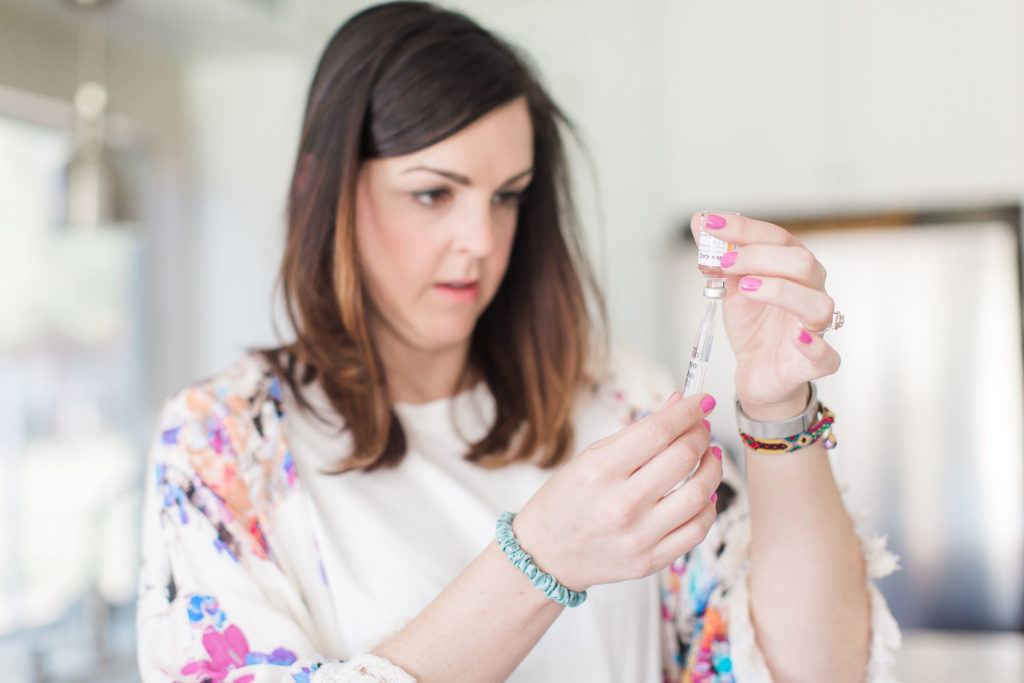
Long-Acting Insulin
Long-acting insulin is extremely similar to intermediate-acting insulin with one very important difference. This insulin should not be injected at the same time as other insulins. Like intermediate insulin, it is injected using a needle and vial and pens, but not used in a pump.
- Intended use: 1-2x daily
- Onset: 1-4 hours
- Peak time: none
- Duration: 20-24 hours
Ultra Long-Acting Insulin
Ultra long-acting insulin is very similar to the two previous types of insulin listed except for the onset, duration, and peak times. This insulin should not be used in a pump.
- Onset: 6 hours after injection
- Peak time: none
- Duration: 36 hours or longer
Premixed insulin
Like the name entails, premixed insulin is a combination of different types of insulins. This type of insulin can be helpful for diabetes patients who have trouble seeing or drawing insulin into a syringe for injection. There are many different mixtures that will help cover glucose levels throughout the day and at mealtimes.
For example: one of the common premixed insulins is Novolin 70/30, this means it is a mixture of 70% intermediate insulin and 30% regular insulin.
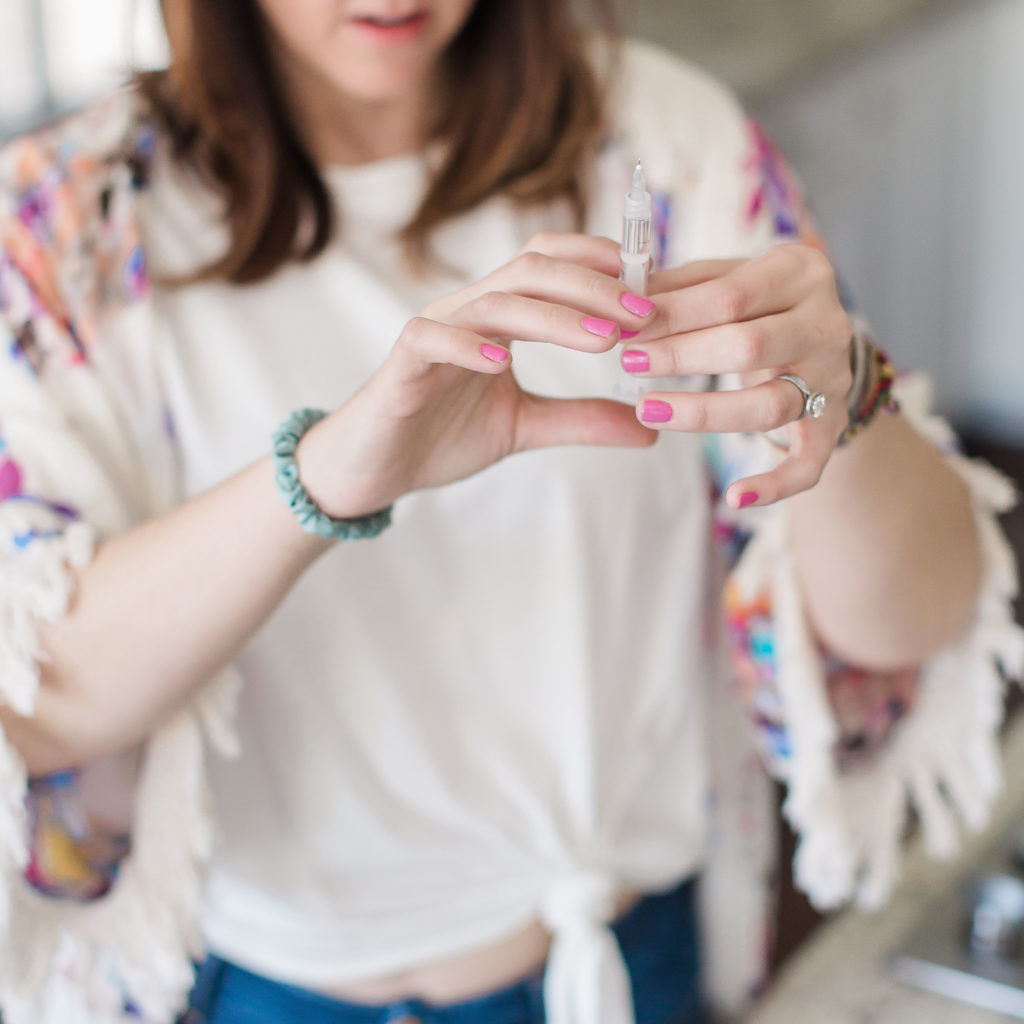
Types of insulin chart
The table below offers a side by side comparison of the different types of insulin and a bit of information about each one.
| Rapid-Acting | Regular or Short-Acting | Intermediate- Acting | Long-Acting | Ultra Long-Acting | |
| Common Brands | Aspart: NovoLog Lispro: Humalog Glulisine: Apidra | Novolin R Humulin R | NPH: Humulin N Novolin N | Glargine: Lantus, Basaglar Detemir: Levemir | Degludec Tresiba Glargine U-300 Toujeo |
| Onset | 15 min | 30 min- 1 hour | 1-3 hours | ~1- 4 hours | 6 hours |
| Peaktime | 1-2 hours | 2-4 hours | 4-10 hours | 3- 14 hours or no peak | No peak time |
| Duration | 4-6 hours | 5-8 hours | 10-16 hours | Up to 24 hours | 36 hours or longer |
| Type of Diabetes | Type 1 Type 2 Gestational | Type 1 Type 2 Gestational | Type 1 Type 2 Gestational | Type 1 Type 2 Gestational | Type 1 Type 2 Speak with Physician |
| Routes of injection | Needle and Vial Pen Pump | Needle and Vial Pen Pump | Needle and Vial Pen | Needle and Vial Pen | Needle and Vial Pen |
| Prescription Needed?** | Yes | No | No | Yes | Yes |
**A prescription may not be needed, but it is important to see a physician for appropriate treatment.
Onset: length of time before insulin reaches the bloodstream and begins to work. Peaktime: The time insulin is lowering glucose at its max. Duration: How long the insulin is lowering glucose levels.
For more information on how insulin is used in insulin pumps make sure to check out Insulin Pumps 101. And, if you’re curious about what types of diabetes require insulin treatment, make sure to read more about the 6 different types of diabetes.
